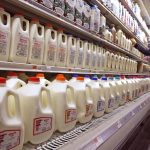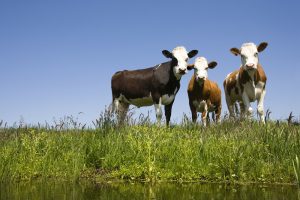
As dairy producers close the books on 2023, analysts see some optimism starting to pour in with a slight improvement in milk prices, but also relief in the higher costs. That’s as butter prices hit a new record high this week.
“I think we’ve certainly come off the worst of it,” says Ben Laine of Terrain Ag. “It was a really tough year; I think we expected a little bit of weakness compared to how good last year had been. But we didn’t quite expect it to fall to the depths that it did.”
Terrain Ag’s analysis shows milk prices have improved dramatically from the depths of the low point registered in July. Terrain shows the August Class III milk price was announced at $17.19/cwt, an improvement from the $13.77/cwt July price.
This week, the bright spot was butter, with butter prices hitting a new high. Laine says the strength in butter is really a product of solid demand right now.
“Demand has just been great,” says Laine. “Domestic demand has been strong for butter. So I think we’re getting to that time of year when retailers start getting concerned about are we going to have enough butter for the holiday season. That’s the big demand part of the year. So I think you get that nervousness, you’ve got good demand already through this year, and relatively low inventories. Plus, as we start making more cheese, we’re pulling some of that milk that would have otherwise been going into butter powder plants, and Class IV is now not quite available as much as it had been. So, it’s driven to really high butter prices.”
Laine says the higher butter prices are also pulling up Class IV milk prices, and while prices have improved, Laine still thinks volatility isn’t going away.
“We’re probably going to see a little more shakiness still, but I think we’re off the worst of it. And as we move into next year, I think even if price levels still aren’t great, if we can see feed costs, and some of the other costs come down, that’ll help margins and help profitability. So it’ll feel a little better, even if we don’t see milk prices get back to where some of the highs that we had seen.”
According to USDA’s Farm Service Agency (FSA), dairy producers who have Dairy Margin Coverage (DMC) for 2023 can expect to receive their eighth consecutive payment. FSA says the August milk margin triggered the payment, with that month’s income over feed margin at $6.46/cwt. Projected August DMC payments totals nearly $120 million.
Margins have been so poor, that the payments have been provided every month. FSA says dairy producers have received more than $1.2 billion in economic support for 2023 and margin forecasts signal more assistance can be expected to close out the year.
Hidden Costs Eating into Margins
Many producers at World Dairy Expo this week talked about the “hidden costs” that are eroding their financial outlooks. Katie Burgess of Ever.Ag says heading into 2024, producers may see some change.
“As we’re looking at 2024, I think we’re going to see a divergence between Class IV and Class III prices,” she says. “Right now, for folks that live in areas where they make a lot of butter and powder, those places are looking quite a bit better than for folks that are primarily paid on cheese.”
Burgess says with the higher costs from general inflation, as well as labor and interest rates, producers really need to take a look at input costs heading into 2024.
“I think producers need to look carefully at what their input costs are going to be for this year, and then look at ways to manage risks, because, as Ben said, we think prices will be higher next year than they were this year, but it’s never for certain,” she says.
Bullish on Beef on Dairy
Dan Basse of AgResource Company agrees that 2023 will be remembered as a year of inflation, but it also started as the year of higher feed prices. And as he thinks about what’s ahead, he’s bullish not just on beef, but all protein.
“I still would coin 2024 as the year of protein,” says Basse. “I say that because whether it’s chicken or pork or beef, and I believe dairy protein will be included in that, it’s going to be relatively strong. So we’ve had the years of crops which were several years ago, we think we’re now moving into the years of protein.”
Basse thinks moving forward, dairy producers can really cash in on the beef on dairy side of the business.
“And so the beef market in particular, it’s supposed to make record highs next year, which again, gives it an avenue for our cull cows, as well as some other opportunities in terms of using dairy animal to at least get a black calf on the ground.”
Basse says AgResource Company’s models don’t think herd expansion will take place for beef cattle anytime soon.
“So, if I think about it, this is three to four years at a minimum,” says Basse. “We are still not retaining [dairy] heifers to a big degree. That gives us the opportunity to really accelerate beef production anytime soon.”
He says the only thing he sees as a sign of caution is the fact foot traffic into higher end restaurants has tapered off a bit in the past two weeks.
“But other than that, I see the demand for protein being relatively strong both globally and domestically,” he says.























